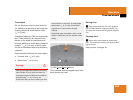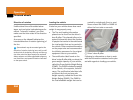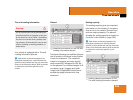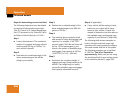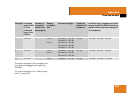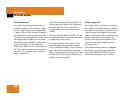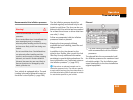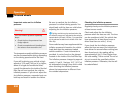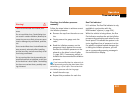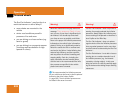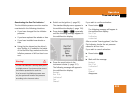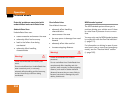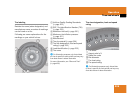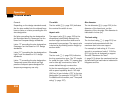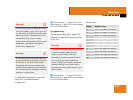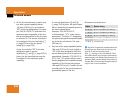
291
Operation
Tires and wheels
Checking tire inflation pressure
manually
Follow the steps below to achieve correct
tire inflation pressure:
̈ Remove the cap from the valve on one
tire.
̈ Firmly press a tire gauge onto the
valve.
̈ Read tire inflation pressure on tire
gauge and check against the recom-
mended tire inflation pressure on the
placard on the driver’s door B-pillar
(
୴ page 289). If necessary, add air to
achieve the recommended tire inflation
pressure.
̈ Install the valve cap.
̈ Repeat this procedure for each tire.
Run Flat Indicator*
U.S. vehicles: The Run Flat Indicator is only
available in conjunction with the
MOExtended* system (
୴ page 294).
While the vehicle is being driven, the Run
Flat Indicator monitors the set tire inflation
pressures by evaluating each wheel’s rota-
tional speed. This allows the system to de-
tect a significant loss of pressure in a tire.
If a wheel’s rotational speed changes due
to falling tire inflation pressure, you will
see a corresponding warning message in
the multifunction display.
Warning! G
Follow recommended tire inflation pres-
sures.
Do not overinflate tires. Overinflating tires
can result in sudden deflation (blowout) be-
cause they are more likely to become punc-
tured or damaged by road debris, potholes,
etc.
Do not underinflate tires. Underinflated tires
wear unevenly, adversely affect handling
and fuel economy, and are more likely to fail
from being overheated.
Do not overload the tires by exceeding the
specified load limit as indicated on the plac-
ard on the driver’s door B-pillar. Overloading
the tires can overheat them, possibly caus-
ing a blowout.
i
If you have overfilled the tire, release tire in-
flation pressure by pushing the metal stem of the
valve with e.g. a tip of a pen. Then recheck the
tire inflation pressure with the tire gauge.



